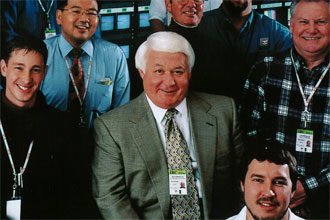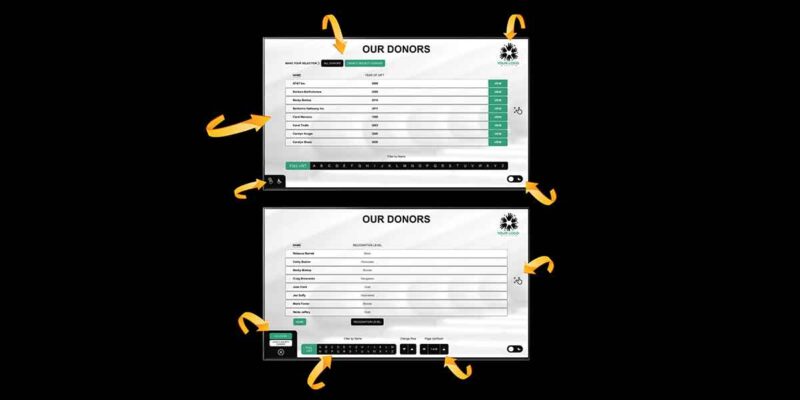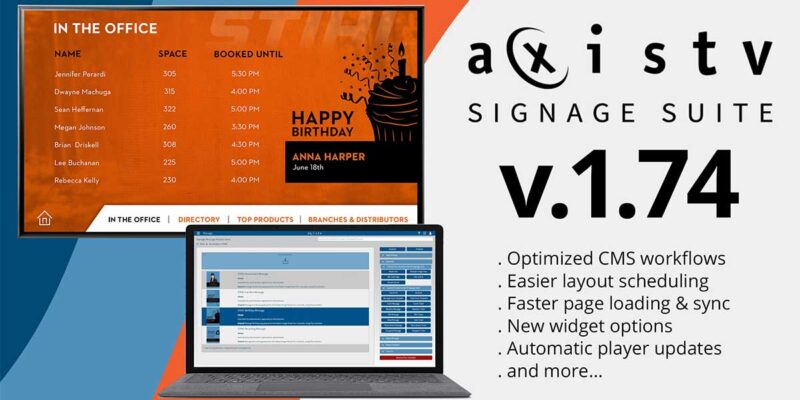AV People: Ed Matthews of Visix, Inc.
 Everyone knows Ed Matthews. Ed is the CEO of Visix, Inc. and well-respected, much- loved, long-time AV veteran. He’s pretty much a staple in industry.
Everyone knows Ed Matthews. Ed is the CEO of Visix, Inc. and well-respected, much- loved, long-time AV veteran. He’s pretty much a staple in industry.
But not many know of his past and all that Ed has accomplished.
“I went right into the Navy out of high school,” remembered Ed. “I spent two out of four years going to electronics school and just always loved technology. When I was in Atlanta, I was a service manager for Ampex and worked in an engineering sales capacity.”
Ed has been active in the AV industry since 1967. But the industry certainly has seen its fair share of changes since then — everything is digital and analog has become a thing of the past.
As involved as Ed has been in the industry for so long, he’s had the opportunity and been very fortunate to work on some major projects… so major, they had an INTERNATIONAL impact. He’s been heavily involved in FOUR Olympics.
Ed and his team had the opportunity to work on the international broadcast center for the 1996 Olympics in Atlanta, Georgia. And from there, the work he had done in Atlanta led him to being personally asked to do the broadcast center for the 1998 Olympics in Nagano, Japan.
Ed was ready to take on the next level of this project. However, it wasn’t without its challenges.
“It was very difficult dealing with the logistics of such a project in another country, let along the language barrier. So during those periods, I became very close friends with Japanese,” said Ed. “It was a huge challenge to get all the engineers, and all of my engineers, all working off the same common symbols and drawings. Some just had their own way of doing certain things. The Japanese look at things one way and we look at things another way, so we had to re-do our entire engineering department and come up with a working standard.
“The engineering was very time consuming,” Ed continued. “We’d have to do the drawings, the Japanese would review the drawings, etc. In Atlanta, we had 1,200 drawings for the entire system. We pre-fabricated the ENTIRE broadcast system at the Panasonic warehouse in Atlanta — we had all these equipment racks, we loaded all the equipment, took it down, did testing, and onsite installation. We had to coordinate all of this with AT&T since they had fiber all over the city. The project really was no easy task.”
A project like this taught Ed and his colleagues that communication, collaboration and teamwork are serious necessities when it comes to getting things done. Taking a broadcast center like the one they did in Atlanta and translating that (no pun intended) to an application in other countries and working with that particular country’s services taught Ed even more about the industry than he’d originally thought he’d ever even learn.
“Now, the broadcast center worked like this,” explained Ed. “We had cameras out in the field so you could look and see what was going on throughout the ENTIRE Olympics – every event – so that data and those images could be sent out to individual countries around the world.
“To give you an example, in the broadcast center, we had 400 — yes, 400 — 14-inch color monitors in a semi-circle. There were three shifts. Once the Olympics started, my team and I were able to step back a bit. The Olympic committee has their own operators, but we were always there in case there were any technical problems. For the installation in Atlanta, we had about 40 people total working. In Japan? We were able to send 20. It was really such a great experience.”
And it didn’t end there for Ed and his team. They did such an amazing job in Atlanta and Nagano that they were invited to do the same thing for Sydney in 2000 and Salt Lake City in 2002.
Ed learned that he loved to travel. For the Sydney Olympics alone, he traveled back and forth six times in just 18 months.
His team also learned they loved to travel. In fact, they were in Japan for so long, he actually had a 20 percent marriage rate. Yes, 20 percent of the people on his team came back married to Japanese women and they all moved back to the United States. He had four installers and two CAD software operators fall in love while working in Japan.
In addition to working on the Olympics, Ed had the opportunity to be heavily involved with the InfoComm CTS committees over the years. In fact, he was on the original committees that created the curriculum for the CTS-I and CTS-D certification degrees.
It’s clear that Ed knows his stuff.
But it’s not even just working on the Olympics or working on the CTS program that has made Ed love this industry so much. It’s the fact that the AV industry has become his family and his family has become a part of the AV industry.
His son, Sean, is the president of Visix and his daughter is the CFO of Visix. He gets to see them every day at work.
He has four grandchildren, two of which live very close to him, and as he says, “All the kids like to come to grandaddy’s and go in the pool.”
Outside of the industry, Ed loves spending time with his family and working on his “bucket list.”
“I’ve seen the Grand Canyon two dozen times in my life, but all at 35,000 feet in the air. I’d like to see it from ground level sometime,” said Ed. “I’ve never been to the Biltmore House in Asheville, North Carolina. I’m slowing down now and I’m taking advantage of it all.”
Ed also has a deep love for animals. He’s been heavily involved with the Georgia Society for the Prevention of Cruelty to Animals. He is on Schnauzer number six and seven. He loves his dogs.
But at the end of the day, Ed’s passion is all AV and he encourages those who are new to the industry to follow their passions as well.
“As I mentioned earlier, this industry is rapidly changing. We’re heavily involved in digital now and people need to really study the industry and technology and keep learning,” advises Ed. “You know, I’ve taken course 101, there’s also 102, 103 – take as many seminars as you can, particularly at InfoComm, as much as your company allows you to, get involved with what’s going on. Commit yourselves to learning and networking. Get to know everyone you possibly can.”
If Ed is any example, then we can safely say, that’s a recipe for success.
Molly Stillman is the director of marketing and new business development for rAVe [Publications]. Reach her at molly@ravepubs.com
Do you know someone in the industry with an interesting story that should be featured in our monthly column? Email Molly and let her know.





